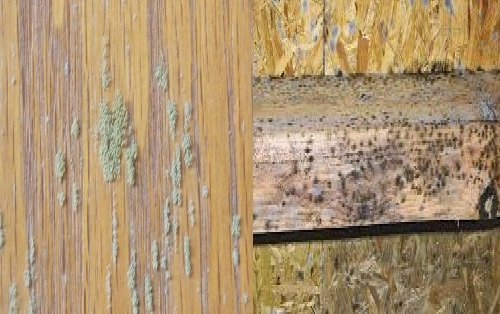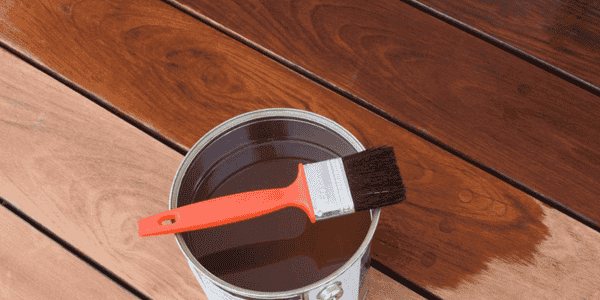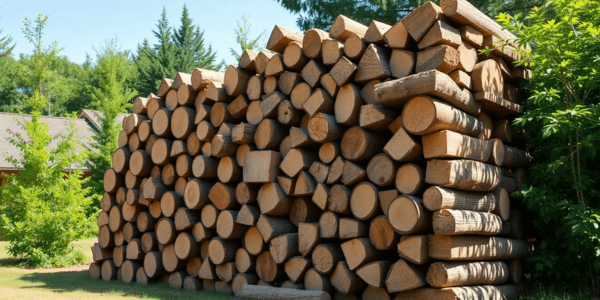For homeowners and wood furniture enthusiasts in the USA, dealing with mildew or mold on wood surfaces can be a frustrating and concerning issue. Both can damage wood, impact indoor air quality, and even pose health risks if left untreated. Although mildew and mold are often used interchangeably, they are different in terms of appearance, growth patterns, and how they should be managed.
This article will explore the key differences between mildew and mold on wood, the causes behind their growth, and practical solutions for prevention and treatment.
What are Mildew and Mold?
Both mildew and mold are types of fungi that thrive in damp, humid conditions. While they share similarities, their impact on wood surfaces and the methods used to treat them differ.
- Mildew: A surface-level fungus that grows in flat, powdery patches. It is less aggressive than mold but can still discolor wood and create an unsightly appearance.
- Mold: A more invasive fungus that penetrates deep into wood fibers. Mold appears fuzzy or slimy and can cause structural damage to wood if left untreated. Mold can also pose more significant health risks.
Key Differences Between Mildew and Mold on Wood
| Feature | Mildew | Mold |
|---|---|---|
| Appearance | Flat, powdery, or chalky surface growth | Fuzzy, slimy, or irregular texture |
| Color | White, gray, or light yellow | Black, green, brown, or dark colors |
| Depth of Growth | Surface-level; does not penetrate deeply | Penetrates deep into wood fibers |
| Damage | Cosmetic discoloration | Structural damage and potential decay |
| Health Risks | Minimal but may cause allergies | Severe risks, including respiratory issues |
| Common Locations | Damp wood surfaces with minimal ventilation | Water-damaged wood, high-moisture areas |
| Removal | Easier to clean with household products | Requires more aggressive treatments |
Causes of Mildew and Mold Growth on Wood
Both mildew and mold grow on wood surfaces under the following conditions:
- Excess Moisture: Moisture is the leading cause of fungal growth on wood. Leaks, flooding, or high humidity levels create the ideal environment for mildew and mold to thrive.
- Poor Ventilation: Areas with little airflow, such as basements, attics, and storage spaces, trap moisture and allow fungi to develop.
- Lack of Sunlight: Dark, damp spaces are perfect breeding grounds for mildew and mold, especially in shaded or enclosed areas.
- Organic Material: Wood itself is an organic material that provides the nutrients fungi need to survive and spread.
- Temperature Fluctuations: Mildew and mold grow rapidly in warm, humid climates with temperatures between 60°F and 80°F.
Identifying Mildew on Wood
Mildew typically appears as:
- Powdery white or gray patches on the wood surface.
- It remains flat and does not spread into the deeper layers of the wood.
- Mildew is common on unfinished wood, furniture in damp areas, or wood exposed to excess humidity, such as in bathrooms or basements.
To test for mildew, simply wipe a small area with a cloth dampened in a diluted bleach solution (1 part bleach, 4 parts water). Mildew will often come off easily, leaving the wood intact.
Identifying Mold on Wood
Mold tends to be:
- Fuzzy, slimy, or dark-colored, often appearing in black, green, or brown patches.
- It penetrates deep into the wood, creating an irregular or textured growth pattern.
- Mold is commonly found on water-damaged wood or surfaces that have been exposed to prolonged moisture.
If mold growth is extensive, you may notice a musty odor and signs of wood softening or decay.
Health Risks of Mildew and Mold
- Mildew: While mildew is less harmful, it can cause minor respiratory irritation, sneezing, or allergies for sensitive individuals.
- Mold: Mold is far more dangerous, as it releases spores into the air. Prolonged exposure can lead to:
- Respiratory issues (coughing, wheezing).
- Allergic reactions.
- Severe health conditions in people with asthma, weakened immune systems, or mold allergies.
How to Remove Mildew from Wood
Mildew removal is relatively simple because it remains on the wood’s surface. Here’s how to clean it:
- Prepare a Cleaning Solution: Mix 1 part bleach or white vinegar with 4 parts water. Alternatively, use a commercial mildew cleaner.
- Clean the Surface:
- Dampen a cloth or sponge with the solution.
- Scrub the affected area gently until the mildew comes off.
- Rinse with clean water and wipe dry.
- Dry Thoroughly: Allow the wood to dry completely. Use fans or open windows to speed up drying and improve ventilation.
- Apply Wood Treatment: Seal the wood with a water-resistant finish to prevent future mildew growth.
How to Remove Mold from Wood
Mold requires more intensive treatment due to its deeper penetration:
- Protect Yourself: Wear gloves, a mask, and eye protection to avoid mold exposure.
- Clean the Surface:
- Mix 1 part bleach with 3 parts water.
- Scrub the moldy area thoroughly with a stiff brush. For unfinished wood, lightly sand the affected surface to remove deep mold spots.
- Disinfect the Wood: Use a mold-killing solution, such as a commercial fungicide or white vinegar, to disinfect the wood and kill remaining spores.
- Dry the Area Completely: Use fans, dehumidifiers, or open windows to eliminate all moisture.
- Check for Structural Damage: If mold has caused softening or rot, consider replacing the affected wood. Mold-infested structural wood may need professional inspection.
How to Prevent Mildew and Mold on Wood
- Control Moisture
- Fix leaks, ensure proper drainage, and repair water-damaged areas promptly.
- Use dehumidifiers in damp spaces like basements or attics.
- Improve Ventilation: Maintain good airflow in enclosed spaces by using fans or opening windows.
- Seal Wood Surfaces: Use water-resistant sealants, paints, or finishes to protect wood from moisture absorption.
- Clean Regularly: Regularly wipe down wood surfaces with a mild disinfectant or vinegar solution to prevent fungal growth.
- Monitor Humidity Levels: Keep indoor humidity levels below 50% using air conditioning or dehumidifiers.
Conclusion
While mildew and mold may appear similar at first glance, understanding their differences is critical for effective treatment and prevention. Mildew remains surface-level and is relatively easy to clean, while mold can penetrate deep into wood, causing structural damage and posing significant health risks.
By identifying the problem early, addressing moisture issues, and following proper cleaning techniques, you can protect your wood surfaces, furniture, and home from both mildew and mold. Taking preventive measures will ensure that your wood remains beautiful, durable, and safe for years to come.


